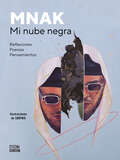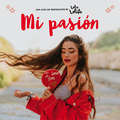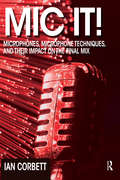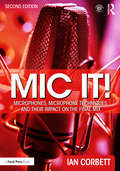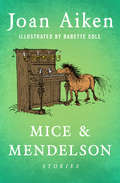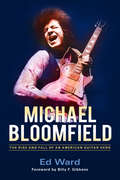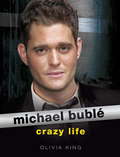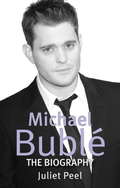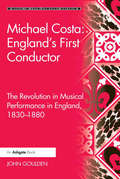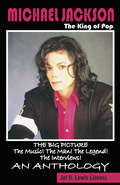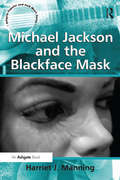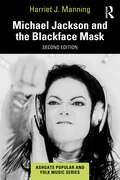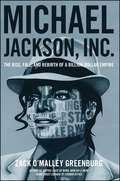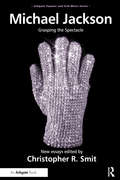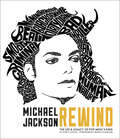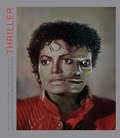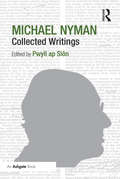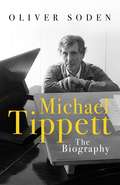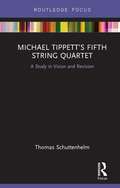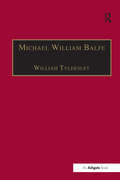- Table View
- List View
Mi nube negra: Reflexiones · Poesías · Pensamientos
by MnakMi nube negra, el estreno editorial de MNAK. Freestyle: rap, poesía y sentimiento. Mi nube negra es el primer libro de Ignacio Romero Montero más conocido como MNAK. Una recopilación de poemas, frases, reflexiones y relatos cortos escritos por uno de los mayores talentos del freestyle español. La mejor manera de entender su mundo interior, su historia y cómo Ignacio se convirtió en Mnak.
Mi pasión: Una guía de inspiración by Lola Lolita (Lola Lolita #Volumen 3)
by Lola MorenoMi pasión. Una guía de inspiración by Lola Lolita. Lola Lolita demuestra cada día en sus redes por qué es una inspiración para sus miles de fans. Lola es capaz de transmitir su carisma, su estilo y su pasión en todo lo que comparte con sus seguidores, ya sean bailes, outfits, frases o fotos inspiradoras. En este libro, Lola nos descubre su lado más personal, sus sueños, sus ideas y su visión particular del mundo que nos rodea. Una guía de estilo para descubrir los secretos de esta influencer, y todo aquello que la convierte en un icono generacional. Déjate inspirar por Lola Lolita.
Mi primer amor (Love Army #Volumen 1)
by Elsa M. R.Una historia llena de pasión por la música, por el k-pop, por los amigos, por Seúl y por el primer amor, aquel que marca de por vida. Aerin tiene miedo de empezar un nuevo curso rodeada del vacío que le hacen sus compañeras de clase, hasta que conoce al recién llegado a Seúl, y nuevo en el instituto Yoongi. Ambos compartirán pupitre, su tendencia a gastar bromas y un entusiasmo y entrega por la música sin límites. Y puede que también compartan los mismos sentimientos.
Mi primer amor (Love Army #Volumen 1)
by Elsa M. R.Una historia llena de pasión por la música, por el k-pop, por los amigos, por Seúl y por el primer amor, aquel que marca de por vida. Aerin tiene miedo de empezar un nuevo curso rodeada del vacío que le hacen sus compañeras de clase, hasta que conoce al recién llegado a Seúl, y nuevo en el instituto Yoongi. Ambos compartirán pupitre, su tendencia a gastar bromas y un entusiasmo y entrega por la música sin límites. Y puede que también compartan los mismos sentimientos.
Mic It!: Microphones, Microphone Techniques, And Their Impact On The Final Mix
by Ian CorbettCapture great sound in the first place, and spend less time "fixing it in the mix" with Ian Corbett’s Mic It! Microphones, Microphone Techniques, and Their Impact on the Final Mix. With his expert guidance, you’ll quickly understand essential audio concepts as they relate to microphones and mic techniques, and learn how to apply them to your recording situation. Whether you only ever buy one microphone, are equipping a studio on a budget, or have a vast selection of great mics to use, you’ll learn to better use whatever tools you have. Mic It! gives you the background to design and discover your own solutions to record the best sound possible. The information in these pages will help you record great source tracks that can be easily developed into anything from ultra-clean mixes to huge, organic soundscapes. Beginning with essential audio theory, then discussing the desirable characteristics of good sound and the elements of a good stereo recording, the book covers microphones, mono and stereo mic techniques, the effect of the recording space or room, and large classical and jazz ensemble recording. A variety of mic techniques for vocals and instruments (both individual and groups) are presented, ranging from vital knowledge that no novice should be without, to advanced techniques that more experienced engineers can explore to benefit and vary the sound of their recordings. Corbett explains large room vs. layer-by-layer small-room recording situations, presents the best techniques for each, and shares typical production challenges and their resolutions. The book provides in depth information on how different mic techniques can be used, modified and fine-tuned to capture not only the best sound, but the best sound for the mix, as well as how to approach and set up the recording session, mixing, and avoid common recording and mixing mistakes.
Mic It!: Microphones, Microphone Techniques, and Their Impact on the Final Mix
by Ian CorbettCapture great sound in the first place and spend less time "fixing it in the mix" with Ian Corbett’s Mic It! With this updated and expanded second edition, you’ll quickly understand essential audio concepts as they relate to microphones and mic techniques and learn how to apply them to your recording situation. Mic It! gives you the background to explore, discover, and design your own solutions, enabling you to record great source tracks that can be developed into anything from ultra-clean mixes to massive, organic soundscapes. Beginning with essential audio theory and a discussion of the desirable characteristics of "good sound", Mic It! covers microphones, mono and stereo mic techniques, the effect of the recording space or room, and large classical and jazz ensemble recording. This second edition also features new chapters on immersive audio, immersive recording concepts, drum tuning, and recording techniques for audio for video. Mic It! provides in-depth information on how different mic techniques can be used, modified, and fine-tuned to capture not only the best sound, but the best sound for the mix, as well as how to approach and set up the recording session, prepare for mixing, and avoid common recording and mixing mistakes. • Train your ears with practical audio examples on the companion website. • Develop and test your knowledge as you learn, with concise, applicable exercises and examples that cover the concepts presented. • Record the best sound possible in any situation with Mic It! Corbett’s expert advice ranges from vital knowledge no novice should be without, to advanced techniques that more experienced engineers can explore to benefit and vary the sound of their recordings. Whether you only ever buy one microphone, are equipping a studio on a budget, or have a vast selection of great mics to use, with Mic It! you’ll learn how to make the most of the tools you have.
Mice & Mendelson: Stories
by Joan Aiken Babette ColeThe hilarious adventures of an elderly pony named Mr. Mendelson and his 2 piano-playing field mice friends In a wild, remote place called Midnight Park, there lives an elderly Orkney pony named Mr. Mendelson. He is only 3 feet tall, is black all over, and has a big, handsome head. For years, Mendelson has been ridden by Sam, who is now old enough to go away to boarding school. But before he leaves, Sam asks his grandfather to buy Mendelson a piano. Not for Mendelson, because everyone knows horses can't play the piano, but for Mendelson's friends Gertrude and Bertha--2 talented field mice who were taught to play by a musician who lives in the park. Delighted when the piano is placed under a large oak tree, the mice promise Mendelson a concert at 6 p.m. every night. With 7 enchanting tales, Mice & Mendelson takes readers into the rich world of these farmyard friends. In 1 story, the old pony gets a bad case of the hiccups. In another, he learns to tell time with the help of Gertrude and Bertha, who wind his watch every day. In further adventures, Mendelson saves the moon from drowning in the pond and the village Christmas trees from being stolen. But what Mendelson really wants is to learn how to fly, and surprisingly his wish almost comes true--no thanks to the wicked ways of the scheming gipsy Dan Sligo! This ebook features illustrations by Babette Cole and a personal history of Joan Aiken including rare images from the author's estate.
Michael Bloomfield: The Rise and Fall of an American Guitar Hero
by Billy Gibbons Ed WardThis is the definitive biography of the legendary guitarist whom Muddy Waters and B. B. King held in high esteem and who created the prototype for Clapton, Hendrix, Page, and those who followed. Bloomfield was a member of the Paul Butterfield Blues Band, which inspired a generation of white blues players; he played with Bob Dylan in the mid-1960s, when his guitar was a central component of Dylan's new rock sound on "Like a Rolling Stone." He then founded the Electric Flag, recorded Super Session with Al Kooper, backed Janis Joplin, and released at least twenty other albums despite debilitating substance abuse. This book, based on extensive interviews with Bloomfield himself and with those who knew him best, and including an extensive discography and Bloomfield's memorable 1968 Rolling Stone interview, is an intimate portrait of one of the pioneers of rock guitar.
Michael Buble: Crazy Life
by Olivia KingThe long-awaited illustrated biography of Michael BubleMichael Buble is the most successful male artist in the world at the moment. Born in British Columbia to a family of Italian fishermen, music is in the family blood and it was Michael's grandfather first introduced him to the kind of music he would later make his own - Frank Sinatra, Ray Charles, Dean Martin and Elvis. Since his debut in 2003, he has sold 25 million albums, won two Grammys and multiple Junos, reached the top 5 in countries around the world as well as numerous number 1s, his concerts have been sell outs and he has cultivated a huge and loyal fanbase. Michael Buble is a music phenomenon and this beautifully designed biography will celebrate his success. Packed with stunning photographs and lavishly designed spreads charting his story - both personal and professional - and his meteoric rise to stardom, this book is a must-have for the millions of Michael Buble fans around the world.
Michael Buble: Crazy Life
by Olivia KingThe long-awaited illustrated biography of Michael BubleMichael Buble is the most successful male artist in the world at the moment. Born in British Columbia to a family of Italian fishermen, music is in the family blood and it was Michael's grandfather first introduced him to the kind of music he would later make his own - Frank Sinatra, Ray Charles, Dean Martin and Elvis. Since his debut in 2003, he has sold 25 million albums, won two Grammys and multiple Junos, reached the top 5 in countries around the world as well as numerous number 1s, his concerts have been sell outs and he has cultivated a huge and loyal fanbase. Michael Buble is a music phenomenon and this beautifully designed biography will celebrate his success. Packed with stunning photographs and lavishly designed spreads charting his story - both personal and professional - and his meteoric rise to stardom, this book is a must-have for the millions of Michael Buble fans around the world.
Michael Buble: The biography
by Juliet PeelMichael Bublé is an international singing sensation. Since his debut in 2003, he has sold 18 million albums, won numerous awards (including a Grammy), reached the top 10 in the UK charts with his first album, 'Michael Bublé', and the top 50 of the Billboard 200 album charts for the same CD. His second album, 'It's Time', was more successful still, debuting at number 4 in the UK charts, and his song 'Home' was a UK number one. His performances and concerts worldwide have been sell outs, while he has cultivated a huge and loyal fanbase. Of Italian origin, and born into a family of fishermen in Canada, Michael was heavily influenced by his grandfather, whom he credited with introducing him to the kind of music he would make his own - Frank Sinatra, Ray Charles, Dean Martin and Elvis, to name but a few. His popularity continues to grow, and this comprehensive and definitive biography charts his fascinating and phenomenal success story.
Michael Costa: The Revolution in Musical Performance in England, 1830-1880 (Music in Nineteenth-Century Britain)
by John GouldenAmong the major changes that swept through the music industry during the mid-nineteenth century, one that has received little attention is how musical performances were managed and directed. Yet this was arguably the most radical change of all: from a loose control shared between the violin-leader, musical director and maestro al cembalo to a system of tight and unified control under a professional conductor-manager. This process brought with it not only baton conducting in its modern form, but also higher standards of training and discipline, a new orchestral lay-out and a more focused rehearsal regime. The resulting rise in standards of performance was arguably the greatest achievement of English music in the otherwise rather barren mid-Victorian period. The key figure in this process was Michael Costa, who built for himself unprecedented contractual powers and used his awesome personal authority to impose reform on the three main institutions of mid-Victorian music: the opera houses, the Philharmonic and the Sacred Harmonic Society. He was a central figure in the battles between the two rival opera houses, between the Philharmonic and the New Philharmonic, and between the venerable Ancient Concerts and the mass festival events of the Sacred Harmonic Society. Costa’s uniquely powerful position in the operatic, symphonic and choral world and the rapidity with which he was forgotten after his death provide a fascinating insight into the politics and changing aesthetics of the Victorian musical world.
Michael Jackson The King of Pop: The Big Picture, The Music! The Man! The Legend! The Interviews! An Anthology.
by Tony Rose Yvonne Rose Jel Jones The Printed Page, Interior & Cover DesignMichael Jackson In Charge! Remember the Times! Remember the Music! Remember Motown 25! Remember the Dance! Get Ready to get Swept Away in a Run-Away Success Story about a Megastar who Started at the Top of the Charts more than 30 years Ago, and is Still Riding High after his untimely death in 2009!
Michael Jackson and the Blackface Mask (Ashgate Popular and Folk Music Series)
by Harriet J. ManningBlackface minstrelsy, the nineteenth-century performance practice in which ideas and images of blackness were constructed and theatricalized by and for whites, continues to permeate contemporary popular music and its audience. Harriet J. Manning argues that this legacy is nowhere more evident than with Michael Jackson in whom minstrelsy’s gestures and tropes are embedded. During the nineteenth century, blackface minstrelsy held together a multitude of meanings and when black entertainers took to the stage this complexity was compounded: minstrelsy became an arena in which black stereotypes were at once enforced and critiqued. This body of contradiction behind the blackface mask provides an effective approach to try and understand Jackson, a cultural figure about whom more questions than answers have been generated. Symbolized by his own whiteface mask, Jackson was at once ’raced’ and raceless and this ambiguity allowed him to serve a whole host of others’ needs - a function of the mask that has run long and deep through its tortuous history. Indeed, Manning argues that minstrelsy’s assumptions and uses have been fundamental to the troubles and controversies with which Jackson was beset.
Michael Jackson and the Blackface Mask (Ashgate Popular and Folk Music Series)
by Harriet J. ManningMichael Jackson challenged the power structure of the American music industry and struck at the heart of blackface minstrelsy, America’s first form of mass entertainment. The response was a derisive caricature that over time Jackson subverted through his art. In this expanded, all-new edition, Michael Jackson and the Blackface Mask argues for the tangible relationship between Jackson and blackface minstrelsy. It reveals the dialogue at minstrelsy’s core and, in its broader sense, tracks a centuries-long pattern of racial oppression and its resistance and how that has been played out in popular theatre. Michael Jackson and the Blackface Mask explores Jackson’s early talent and fame and the birth and escalation of ‘Wacko Jacko’. In relation to all this, the book examines Jackson’s dynamic art as it evolved, from his live performances and short films to the very surface of his own body. Scholarly and interdisciplinary, this work is suitable for readers across a diverse spectrum of academic fields, including African American studies, popular music studies and cultural theory, media and communication, gender studies and performance and theatre studies. Academic but accessible, this book will also be an engaging read for anyone interested in Michael Jackson and especially in his role as an icon of difference, in America’s dynamics of race and his mass media image.
Michael Jackson and the Blackface Mask (Ashgate Popular and Folk Music Series)
by Harriet J. ManningMichael Jackson challenged the power structure of the American music industry and struck at the heart of blackface minstrelsy, America’s first form of mass entertainment. The response was a derisive caricature that over time Jackson subverted through his art.In this expanded, all-new edition, Michael Jackson and the Blackface Mask argues for the tangible relationship between Jackson and blackface minstrelsy. It reveals the dialogue at minstrelsy’s core and, in its broader sense, tracks a centuries-long pattern of racial oppression and its resistance and how that has been played out in popular theatre. Michael Jackson and the Blackface Mask explores Jackson’s early talent and fame and the birth and escalation of ‘Wacko Jacko’. In relation to all this, the book examines Jackson’s dynamic art as it evolved, from his live performances and short films to the very surface of his own body.Scholarly and interdisciplinary, this work is suitable for readers across a diverse spectrum of academic fields, including African American studies, popular music studies and cultural theory, media and communication, gender studies and performance and theatre studies. Academic but accessible, this book will also be an engaging read for anyone interested in Michael Jackson and especially in his role as an icon of difference, in America’s dynamics of race and his mass media image.
Michael Jackson, Inc.
by Zack O'Malley GreenburgThe surprising rags-to-riches-to-rags-to-riches story of how Michael Jackson grew a billion-dollar business.Michael Jackson is known by many as the greatest entertainer of all time, but he was also a revolutionary when it came to business. In addition to famously buying the Beatles' publishing catalogue, Jackson was one of the first pop stars to launch his own clothing line, record label, sneakers, and video games--creating a fundamental shift in the monetization of fame and paving the way for entertainer-entrepreneurs like Jay Z and Diddy. All told, Jackson earned more than $1.1 billion in his solo career, and the assets he built in life have earned more than $700 million in the five years since his death--more than any other solo music act over that time. Michael Jackson, Inc. reveals the incredible rise, fall, and rise again of Michael Jackson's fortune--driven by the unmatched perfectionism of the King of Pop. Forbes senior editor Zack O'Malley Greenburg uncovers never-before-told stories from interviews with more than 100 people, including music industry veterans Berry Gordy, John Branca, and Walter Yetnikoff; artists 50 Cent, Sheryl Crow, and Jon Bon Jovi; and members of the Jackson family. Other insights come from court documents and Jackson's private notes, some of them previously unpublished. Through Greenburg's novelistic telling, a clear picture emerges of Jackson's early years, his rise to international superstardom, his decline--fueled by demons internal and external, as well as the dissolution of the team that helped him execute his best business moves--and, finally, his financial life after death. Underlying Jackson's unique history is the complex but universal tale of the effects of wealth and fame on the human psyche. A valuable case study for generations of entertainers to come and for anyone interested in show business, Michael Jackson, Inc. tells the story of a man whose financial feats, once obscured by his late-life travails, have become an enduring legacy.
Michael Jackson: Grasping the Spectacle (Ashgate Popular And Folk Music Ser.)
by Christopher R. SmitThroughout his 40-year career, Michael Jackson intrigued and captivated public imagination through musical ingenuity, sexual and racial spectacle, savvy publicity stunts, odd behaviours, and a seemingly apolitical (yet always political) offering of popular art. A consistent player on the public stage from the age of eight, his consciousness was no doubt shaped by his countless public appearances, both designed and serendipitous. The artefacts he left behind - music, interviews, books written by and about him, and commercial products including dolls, buttons, posters, and photographs, videos, movies - will all become data in our cultural conversation about who Michael Jackson was, who he wanted to be, who we made him to be, and why. Michael Jackson: Grasping the Spectacle includes essays that aim to understand Jackson from multiple perspectives: critical cultural theory, musicology, art history, media studies, cultural anthropology, sociology, philosophy, religious studies, literary theory, gender studies, performance studies, disability studies, film studies, and African-American studies. Intended for classroom use as well as research and general interest, this book expands our understanding both of this fascinating figure himself and of gender, sexuality, celebrity, and popular culture.
Michael Jackson: The Life & Legacy of Pop Music's King
by Daryl EasleaRelive the incredible history of the King of Pop in reverse. Michael Jackson: Rewind charts the life to Michael from his tragic, unexpected passing to his childhood.By the time Michael Jackson passed away in 2009, he had sold an estimated 750 million records worldwide over his career. He had won 26 American Music Awards and 13 Grammy Awards as well as the Grammy Lifetime Achievement Award, and was ranked number three, after The Beatles and Elvis Presley, of best-selling music artists. Five years after his death, the net worth of his estate is more than 600 million dollars. He is, without a doubt, one of the most popular - and controversial - artists of all time. Now, for the first time ever, author Daryl Easlea will explore the life and history of Michael Jackson... in reverse. Starting with his tragic death and rewinding to his early hits with the Jackson 5 and life in Gary, Indiana, this is a complete illustrated history of the King of Pop: his genius, his life, and his demons. Loaded with over 300 images, a timeline of his life, a complete discography, and more, this is the must-have book for any Michael Jackson fan.
Michael Jackson: The Making of "Thriller"
by Douglas KirklandMichael Jackson: The Making of "Thriller" is an illustrated tribute to the King of Pop and his groundbreaking music video, with never-before-seen photos of its creation. The book features over 200 exclusive, behind-the-scenes photographs of the artist on set during the 1983 production of the Grammy award winning video directed by John Landis. Considered to be the most successful project of all time, "Thriller" is beloved the world over, inspiring imitation and a cult-like following of millions of fans. Documenting the creation of the most popular and iconic music video of all time, this book celebrates the artist and his music at the top of his career. Famed photographer Douglas Kirkland and journalist Nancy Griffin were the only members of the media allowed on the set of the video. The resulting photos capture Jackson both in high performance mode and relaxing on the set and depict his transformation into the characters in the video as well capturing the public and private faces of Michael Jackson. Compelling, intimate photos of the artist are accompanied by interviews and quotes from musicians and celebrities, including Sir Paul McCartney, Diddy, Beyonce, Steven Spielberg and many more. With a holographic cover that, when tilted, transforms the artist into his zombie character, the book is an impressive gift to be treasured by fans and music lovers everywhere.
Michael Nyman: Collected Writings
by Pwyll ap SiônFor over three decades Michael Nyman's music has succeeded in reaching beyond the small community of contemporary music aficionados to a much wider range of listeners. An important element in unlocking the key to Nyman's success lies in his writings about music, which preoccupied him for over a decade from the late 1960s to the early 1980s. During this time Nyman produced over 100 articles, covering almost every conceivable musical style and genre - from the Early Music revival and the West's interest in 'world' music, or from John Cage and minimalism to rock and pop. Nyman initiated a number of landmark moments in the course of late twentieth-century music along the way: he was one of the first to critique the distinction between the European avant-garde and the American experimental movement; he was the first to coin the term 'minimalism' in relation to the music of (then largely unknown) Steve Reich and Terry Riley, and later Philip Glass; the first to seriously engage with the music of the English experimental tradition and the importance of Cornelius Cardew, and to identify the importance of Art Colleges in nurturing and developing a radical alternative to modernism; and one of the first writers to grasp the significance of post-minimalists such as Brian Eno and Harold Budd, and to realize how these elements could be brought together into a new aesthetic vision for his own creative endeavours, which was formulated during the late 1970s and early 80s. Much of what transformed and defined Nyman's musical character may be found within the pages of this volume of his writings, comprehensively edited and annotated for the first time, and including previously unpublished material from Nyman's second interview with Steve Reich in 1976. There is also much here to engage the minds of those who are interested in pre-twentieth century music, from Early and Baroque music (Handel and Purcell in particular) to innovative features in Haydn, spatial elements in Berlioz, or Bruckner and Mahler's symphonic works.
Michael Tippett: The Biography
by Oliver Soden'A delight to read' Philip Pullman'Essential reading ... a genuine landmark publication' Tom ServiceA BBC Radio 4 'Book of the Week'The music of the British composer Michael Tippett - including the oratorio A Child of Our Time, five operas, and four symphonies - is among the most visionary of the twentieth century. But little has been written about his extraordinary life. In this long-awaited first biography, Oliver Soden weaves a century-spanning narrative of epic scope and penetrating insight. His achievement is to have enriched our understanding not only of Tippett but of the twentieth century. Figures such as T.S. Eliot, E.M. Forster, Barbara Hepworth, and W.H. Auden jostle in the cast list. An Edwardian world of gaslight and empire cedes to turmoil and warfare and his operas' game-changing attitudes to gay and civil rights, against a backdrop of the Cold War and the Space Race.The result is a landmark in the study of twentieth-century culture, simultaneously an astonishing feat of scholarship and a story as enthralling as in any great novel.
Michael Tippett: The Biography
by Oliver Soden'A delight to read' Philip Pullman'Essential reading ... a genuine landmark publication' Tom ServiceA BBC Radio 4 'Book of the Week'The music of the British composer Michael Tippett - including the oratorio A Child of Our Time, five operas, and four symphonies - is among the most visionary of the twentieth century. But little has been written about his extraordinary life. In this long-awaited first biography, Oliver Soden weaves a century-spanning narrative of epic scope and penetrating insight. His achievement is to have enriched our understanding not only of Tippett but of the twentieth century. Figures such as T.S. Eliot, E.M. Forster, Barbara Hepworth, and W.H. Auden jostle in the cast list. An Edwardian world of gaslight and empire cedes to turmoil and warfare and his operas' game-changing attitudes to gay and civil rights, against a backdrop of the Cold War and the Space Race.The result is a landmark in the study of twentieth-century culture, simultaneously an astonishing feat of scholarship and a story as enthralling as in any great novel.
Michael Tippett’s Fifth String Quartet: A Study in Vision and Revision
by Thomas SchuttenhelmThomas Schuttenhelm provides a detailed account of the events leading up to and throughout the compositional process associated with Michael Tippett’s Fifth String Quartet and a comprehensive analysis of the entire quartet. The commentary discusses this work in the context of Tippett’s creative development and places it within the historical context of the genre of the string quartet. The commentary includes interviews with the members of the Lindsay String Quartet, who premiered the work, as well as previously unpublished letters from the composer and interviews with Tippett in which he discusses the quartet in detail. Special attention is given to Tippett’s preliminary attempts, which were only recently discovered (2011) and to the evidence that suggests he altered the original ending. Included are images from the composer’s sketchbooks and manuscripts, as well as the original beginning and the altered ending.
Michael William Balfe: His Life and His English Operas (Music In Nineteenth-century Britain Ser.)
by William TyldesleyWithout doubt, Michael William Balfe (1808-1870) was the most successful composer of English opera in the mid nineteenth century. During his lifetime he enjoyed an international reputation and worked with some of the leading singers of the time, including Jenny Lind, Malibran and Grisi. Drawing on previously unused source materials such as letters, legal documents and playbills, this biography of Balfe and in-depth study of his English operas overturns many of the previously accepted 'facts' of the composer's lifestyle. Using London as his base, Dublin-born Balfe spent long periods in Paris and travelled widely in Europe. William Tyldesley discusses the continental influences evident in Balfe's operas and offers new suggestions as to the draw that Paris held for the composer. Far from leading a fairly prosperous and unexceptional life, Balfe is shown to have found himself in financial straits on more than one occasion, and to have employed possibly unethical means of extracting himself from them. Those wishing to perform Balfe's works or to do further research into them, will find Tyldesley's re-examination of the composer a necessary first port of call.
